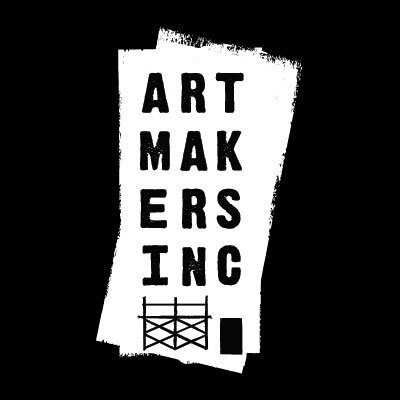HOMAGE TO SEURAT: LA GRANDE JATTE IN HARLEM
1986
EVA COCKCROFT
Hope Steven Garden, West 142nd Street & Amsterdam Avenue, Manhattan, NY
2 walls: each 30’ x 30’, acrylic on textured concrete
commission/funded by GreenThumb/Artists in the Gardens, with West Harlem Group Assistance
Photos © Eva Cockcroft
Initially daunted by the heavily textured stucco surface of the two walls, Eva realized she could use it to her advantage. She developed a striking design inspired by Georges Seurat’s pointillist painting A Sunday Afternoon on La Grande Jatte—1884 (which today hangs in the Art Institute of Chicago). Adapting several figures from the Post-Impressionist painting – working class Parisians enjoying a weekend afternoon on an island park in the middle of the Seine – Eva transferred the setting to New York and heightened Seurat’s muted colors to reflect Harlem’s Sunday best finery.
Eva designed the mural by projecting photographs of building’s façade onto large sheets of paper hung on the walls of her studio, using the stucco shapes to determine composition and color. Hands, elbows, and the faces of the figures were positioned on the raised stucco portions to give them a sense of three-dimensionality.
2009 RESTORATION
JANET BRAUN-REINITZ, project director/lead artist
Principal artists: Rochelle Shicoff, Maria Dominguez
Art Conservator: Harriet Irgang Alden (Rustin Levenson Art Conservation)
Interns: Alexandra Unthank, Jessica Guzman, Ariel Mercardo
Volunteers: Susan C. Harts, Kristen Laise, Shannon Moran, Jane Weissman
Sponsored by Rescue Public Murals/Heritage Preservation, Washington DC
Funded by Friends of Heritage Preservation
Material Support from Golden Artists Colors
Photos © Jane Weissman, Camille Perrottet, Janet Braun-Reinitz
Twenty-plus years of exposure to sun, wind, rain and wall repairs rendered Homage to Seurat’s intensely colored paint – greens, turquoise, reds, purples and yellows – dull, faded and abraded. In late summer 2009, thanks to the innovative program Rescue Public Murals (RPM), the mural was restored.
Launched in 2006 by mural historian Tim Drescher and art conservator Will Shank, Rescue Public Murals aimed to identify endangered murals of significant historic and artistic value throughout the United States and obtain financial support for their preservation, ensuring their survival for several more decades. Currently inactive, RPM, directed by Kristen Laise, was based in Washington, D.C. at the national nonprofit organization Heritage Preservation (now closed). The Seurat restoration was RPM’s only project due to the lack of funding for future endeavors.
An assessment by art conservator Harriet Irgang Alden revealed that the paint’s fading and flaking were mainly due to the wall not being primed and, in order to preserve the mural, it had to be repainted. Eva used Golden Artist Colors and, after consulting with the company, it was decided to apply its clear Soft Gel Gloss to the wall to serve as the primer layer. This coating would also preserve and protect the original mural and allow its colors and shapes to be seen, guiding the restorers’ work on the textured wall. The completed mural received another layer of Soft Gel Gloss to protect the new paint before the final application of varnish to repel the sun’s ultraviolet rays.
Slides from 1986 presented the most accurate depiction of Eva’s colors and were used to establish the basic palette of hues. Approximately 100 hours were devoted to the faithful matching and mixing of more than 70 colors, over 30 of them green. Budgeted at $70,000, the three-month restoration of Homage to Seurat required 18 gallons of paint and used 51 brushes.
As the restoration progressed, conservation researchers conducted a cross-sectional analysis of materials, an infrared spectroscopy, and other tests on small paint and mortar samples. To aid continued research, a small portion of the lower left wall, was divided into five 2” x 2” sections and set aside as a control area. Each square got one more treatment than the last. Should the mural’s paint fail or discolor, these control areas may reveal if the paint or sealers are the cause.
Click here for technical aspects of the restoration.
Click here for Tom Campbell’s series of six videos about the restoration with artist interviews.











































